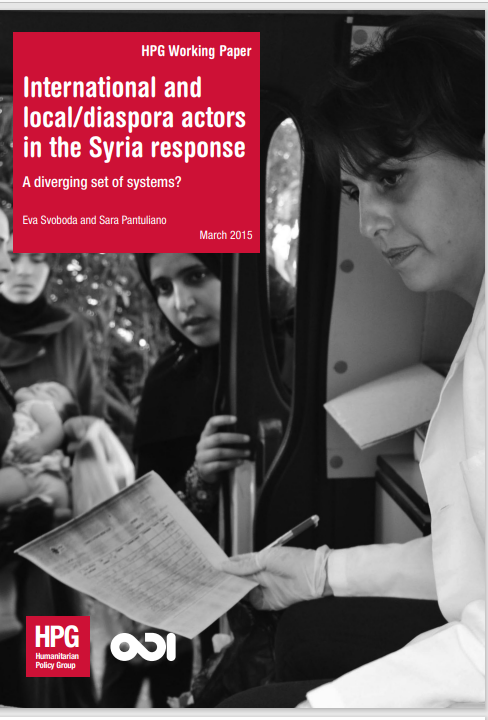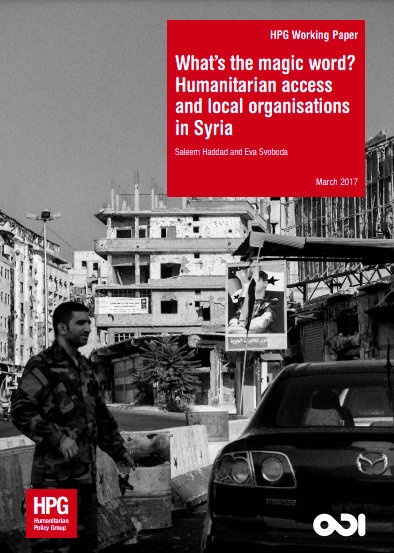
Reports
International and Local/diaspora Actors in the Syria Response: A diverging set of systems?
Publication year:
2015
English
Format:
Publisher:
HPG, Humanitarian Policy Group,ODI, Overseas Development Institute
The lack of physical presence of international aid agencies in Syria has shone a spotlight onto what is commonly called the ‘local response’: groups and organisations that do not belong to the formal or traditional humanitarian sector of the UN, the International Committee of the Red Cross (ICRC) and international NGOs. There is an assumption that the challenges faced by the formal humanitarian system are fundamentally different from those faced by local/diaspora groups. Yet access, insecurity, funding and the effects of counter-terrorism legislation are issues that all aid agencies are grappling with. Focusing on differences rather than recognising similarities encourages the belief that local and international aid agencies cannot work together, and discourages them from exploring how they could. As needs in Syria far outweigh what each individual organisation can do, it is time to explore how forces can be combined, while also recognising that there will be instances where international aid agencies and local/diaspora groups will operate separately
Read full abstract
Authors
View & Download
English
1 Documents
Document information
Authors
Content type
Country
Region
Rights
© Author/Publisher
Keywords
Found a mistake? Help us improve!
If you have noticed a document assigned to the wrong author or any other inaccuracies, let us know! Your feedback helps us keep our data accurate and useful for everyone.
Share
Link

